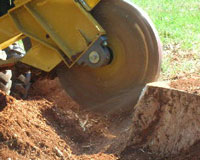The spruce spider mite is one of the most damaging pests of spruces and many other conifers. These mites suck sap from the undersides of the needles. The green pigment disappears, causing a stippled appearance. Spider mites first appear between april and june. A complete generation may be produced in only seventeen days so mites can rapidly build up to tremendous numbers during the growing season. Young spruce trees may die the first season. If left uncontrolled for several years, older trees may die with symptons progressing from the lower branches upward.
Symptoms
Needles are stippled yellow and dirty with symptoms progressing from the lower branches upward. There may be silken webbing on the twigs and needles. Needles usually turn brown and fall off. To determine if the tree is infested with mites, hold a sheet of white paper underneath some stippled needles and tap the folliage sharply. Dark green to black specks about the size of pepper grains will drop to the paper and begin to crawl around.
Treatments
- Certified arborists will spray insecticide on affected plants. Repeat applications may be necessary as mites are detected or at 30 day intervals. Constant monitoring with the above method should be done to determine if repeat sprayings are needed.
- Injection by a certified arborist can be done on trees where spraying is not practical or the saving of beneficial insects is desired.
Fertilizer injections or liquid injection of fertilizer will increase the vigor of trees that have been attacked. A properly fertilized tree will be more tolerant of spider mite attacks.
Spider mites can be active until late in the fall or even during warm periods in the winter.


